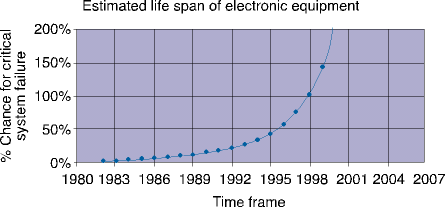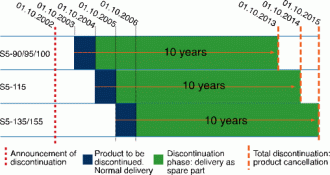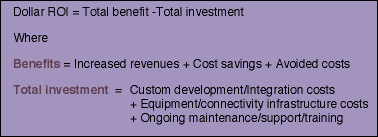
While it is commonly accepted that the only constant is change, one often overlooks the fact that the rate of change is also changing ... and at an alarming rate. The reality is that with advances in technology small incremental changes are experienced daily and hence the product life of equipment and software is decreasing rapidly.
Why change?
There are mainly two reasons to adopt change. The first reason is to reduce risk (avoid costs) while the second is to add value (increase profits). In terms of risks these are typically brought on by changes in legislation or advances in technology resulting in a product becoming redundant.
The ideal of any migration project should be to minimise risk while adding value by adopting some of the newly offered functionality. If the objective is to only reduce risk then it is important to note that the formula indicates: RISK = IMPACT x PROBABILITY. Although the impact associated with product failure is normally significant the probability of complete failure is normally low.
Statistically it is not easy to substantiate the 'probability' and hence certain guidelines are used. Within certain industries depending on the cost base of assets the rule of thumb that software normally at best has a life span of five years while intelligent electronic equipment has a life expectancy estimated at 10 years is applied. For non-critical equipment the life expectancy of equipment can be up to 20 years. The argument may be that this depends on a specific type of product.
Nevertheless, the bathtub curve below indicates how expected failure increases over time. From a supplier perspective the components used to make the product also has a limited life span. Hence, for suppliers to stay competitive new functionality as brought on by advances in technology is offered in the form of new ranges of products (refer to Siemens S5 'phase out' time line as an example).

In terms of risk reduction strategy it is important to be aware of the fact that support levels and spares availability decrease and that some clients are actually busy buying up available spares. Hence, the effect is that the cost of equipment increases. When upgrade takes place an opportunity exists to add value while moving with technology and using the increased functionality such as extended diagnostics abilities and provision of information.
Considerations
Various aspects have to be considered as part of any migration strategy such as cost of the new equipment, cost of critical spares that are to be kept in stock, software changes that are required from old range to new range, the training that is required, normal project overhead costs, cost associated with downtime due to change over project, infrastructure related costs, possibility of following a phased approach, possibility to use a conversion tool to reduce engineering time and any concept changes, ie, decentralised configurations vs. centralised configuration. What is also important to consider is not only the effect of the investment to date but also the investment required over the lifetime of the plant were it will be utilised.

Advantages
One advantage is that if a migration strategy is determined upfront it may be possibly to follow a phased implementation approach. This is depicted graphically where a Siemens S7_400 CPU is used to replace a S5-135U CPU while keeping the S5 inputs and outputs (I/O). This is possible due to the fact that within Siemens (and others) there is a backward compatible migration strategy that allows for the old S5 equipment to be re-used hence extending the return on investment (ROI). Also by converting the software with the S5 to S7 conversion tool as apposed to re-writing it the ROI is further increased although no new value is added and only the risk is addressed.

Again, change represents an opportunity to re-look at the functionality in order to identify aspects that can add value. One benefit offered by migration is that the plant may be standardised hence reducing the total cost of ownership (TCO). Also, in theory, less or lower cost components should be required due to the advances in technology.
Migration strategy process
GijimaAst has over time and with experience developed a methodology and tool set to facilitate the risk reduction strategy. As a first step an audit is undertaken along certain boundaries to ascertain the current AS-IS configuration and risk profile of the client. Next, the options are identified based on certain 'best practices' research and identifying opportunities that may be capitalised on, ie, increasing the ROI by possibly following a phased approach as detailed above. It may be required to determine the costs of certain future state TO-BE options based on business drivers or even switching costs from a TCO perspective from one supplier to another. It may be that the 'business benefits' need to be predicted in terms of forecasting the costs should an incident occur such as equipment failure or predicting the envisaged profit contribution and breakeven ROI point should a migration be performed. This information is then used by the client to assist with drawing up a motivation or business case to enable evaluation prior to performing the migration project.
To assist the client with a motivation to perform migration GijimaAst has compiled a 'business case' framework document that will enable the client to perform a motivation to the executives based on the aforementioned process. All that the client has to do is fill in the blanks to use the document. Although the document is based on the migration of the Siemens S5 to S7 PLC range the concept may be applied for most migration projects. Based on GijimaAst's experience in performing motivations and even similar migration projects we can assist the client with the migration strategy were required. Although the risk may not yet be featuring on the top 10 list it is vital to have a risk reduction strategy that spells out a time line acceptable to address the envisaged risk.
Note that any readers who would like to receive a copy of the template (free of charge with no obligation) are invited to e-mail Petrus Klopper at GijimaAST.
For more information contact Petrus Klopper, GijimaAst, 082 559 7437, [email protected]

© Technews Publishing (Pty) Ltd | All Rights Reserved